DuraCube’s Product Stewardship Program redefines sustainable design by embedding end-of-life planning into product creation. Through circular processes, material reuse, and industry collaboration, it demonstrates that forward-thinking architecture begins with back-to-front design—combining environmental responsibility with practical, cost-neutral implementation.
In the architecture and design industry, we’re trained to start from the beginning. We jot down ideas, sketch, model and build – more often than not, from scratch and from the ground up – invariably moving forward from concept to completion. But if genuine sustainability is teaching us something, it is that the end is a consideration for the beginning.
The concept of designing for a product’s disassembly and disposal at the very beginning of its life isn’t new. But by asking a more profound, far-reaching and at times uncomfortable question about what our plan is for the buildings, the fit-outs and the products we create and specify when they’re no longer needed or usable, it is undoubtedly the next frontier in sustainable design.
This notion is anchored by a fundamental change of direction that shifts the responsibility from a future problem to a present-day design challenge. And the leading Australian bathroom joinery systems specialist, DuraCube, is embracing this transition. Their Product Stewardship Program is a tangible, working scheme embodying this progressive back-to-front design thinking – and proving that when a manufacturer takes radical responsibility for its product’s entire lifecycle, it can create a robust, circular and commercially viable model for the entire industry.
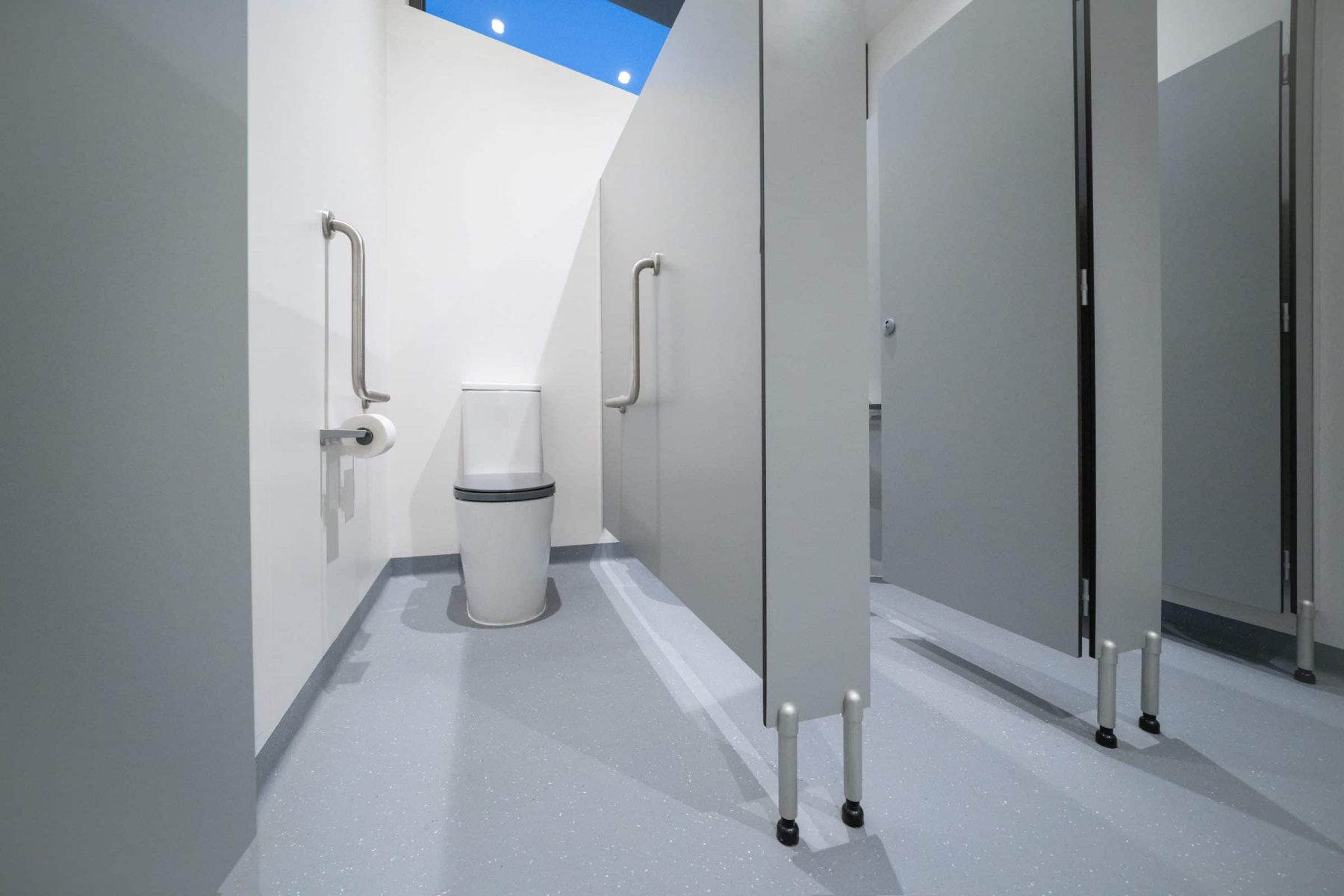
But first, let’s start at the beginning
The motivation behind the program is an essential part of the company’s long-term vision of holistic sustainability. “DuraCube’s commitment to sustainability focuses on three key pillars that enable us to meet existing needs without compromising the opportunity for future generations to do the same,” explains Ben Simpson – General Manager at DuraCube.
These pillars – Manufacturing Sustainably, Product Lifecycle and Third-Party Certification – are not just high-level policies; they form a framework that is deeply embedded in the company’s day-to-day processes. This is evident in the practical decisions made on the factory floor, where a focus on material efficiency has led to innovations like custom cut-to-size options that minimise wasteful offcuts. It’s also expressed through their conscious preference for powder-coating over anodising for aluminium components – and extends to all waste streams, from the comprehensive recycling of metal scraps to the simple, practical reuse of plastic packaging.
This intricate operational focus on sustainability establishes a particularly authentic context for their entire product philosophy – it paints a picture of a company that won’t settle for simply manufacturing an enduring product with a 15-year warranty, because they recognise that genuine stewardship means considering what might happen on day 5,476.
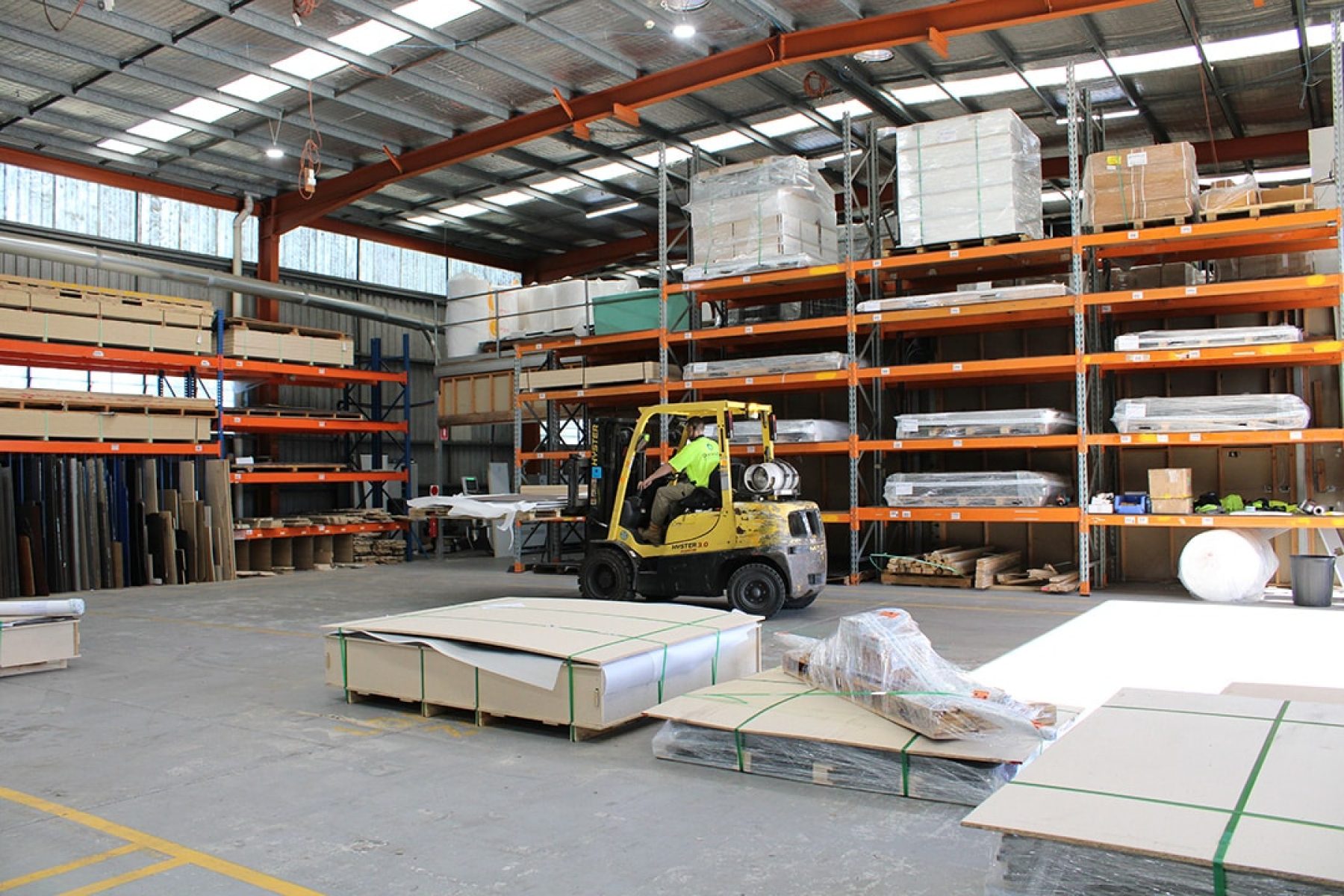
Back-to-front design in action
The program is a masterclass in logistical planning and supply chain control, clearly designed with the end in mind. “DuraCube’s Product Stewardship Program is a targeted sustainability initiative that addresses the entire end-of-life process for our toilet partitions made from DuraSafe Compact Laminate,” Ben explains. “It’s designed to extend the useful lifecycle of materials used in our products, support closed-loop recycling for certain components, promote responsible material separation and traceable reuse, and invite industry professionals to participate in this process by encouraging them to embrace product returns.”
In practice, this translates into a meticulously considered journey that accounts for every product component. The process begins once a product’s first life is complete, at which point clients are engaged as active partners in the circular process by returning their end-of-life partitions to DuraCube’s Sydney Warehouse. Upon arrival, the real transformation begins – for a symbolic fee, each unit is carefully disassembled to ensure a neat separation of its core materials. From there, the components diverge – the high-value aluminium and stainless steel are channelled into efficient, conventional metal recycling streams while the DuraSafe Compact Laminate panels embark on a very different path.
“They are manually sorted by colour and size to avoid contamination,” Ben enthuses. “And then, they’re catalogued and prepared for their next life before being exported to India through a certified trading partner to be repurposed into electrical switchboards. In essence, what was once a partition in an Australian commercial bathroom becomes essential infrastructure in a new building abroad.”
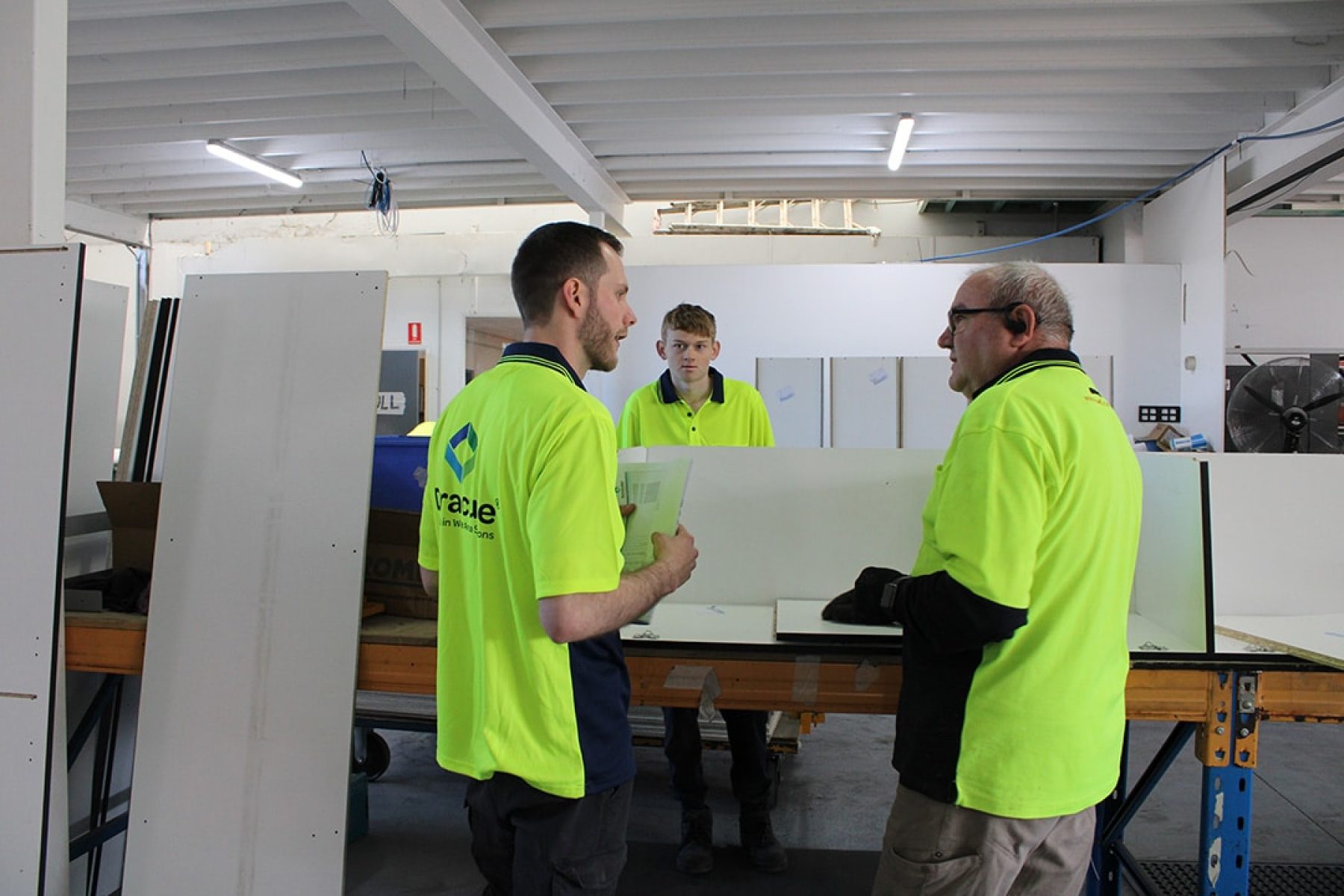
The proof is in the numbers
Now, this relatively low-tech process yields significant environmental benefits, demonstrating that when you plan for the end, the savings are built in from the start.
Every single cubicle returned and processed through the program saves an estimated 150 kilograms of CO2 equivalent (CO2e) emissions. This impressive figure is a composite of several key actions, from the recycling of aluminium to the reuse of the compact laminate panels.
These numbers represent the tangible avoidance of emissions from the energy-intensive mining, extraction and manufacturing of virgin materials. And by specifying a system with this end-of-life plan, architects, designers and specifiers are directly contributing to lowering the embodied carbon of their projects. “These savings amount to a significant environmental benefit, especially when scaled across multiple projects,” Ben adds.
But these aren’t the only numbers that matter. In a direct challenge to the misconception that environmentally forward products come at a premium, DuraCube’s sustainable solution is not cost-prohibitive. “We believe that sustainable building materials and systems should be readily accessible to designers and builders, without requiring higher pricing or complex procedures,” Ben emphasises. “It makes green design practical and cost-neutral for most projects.”
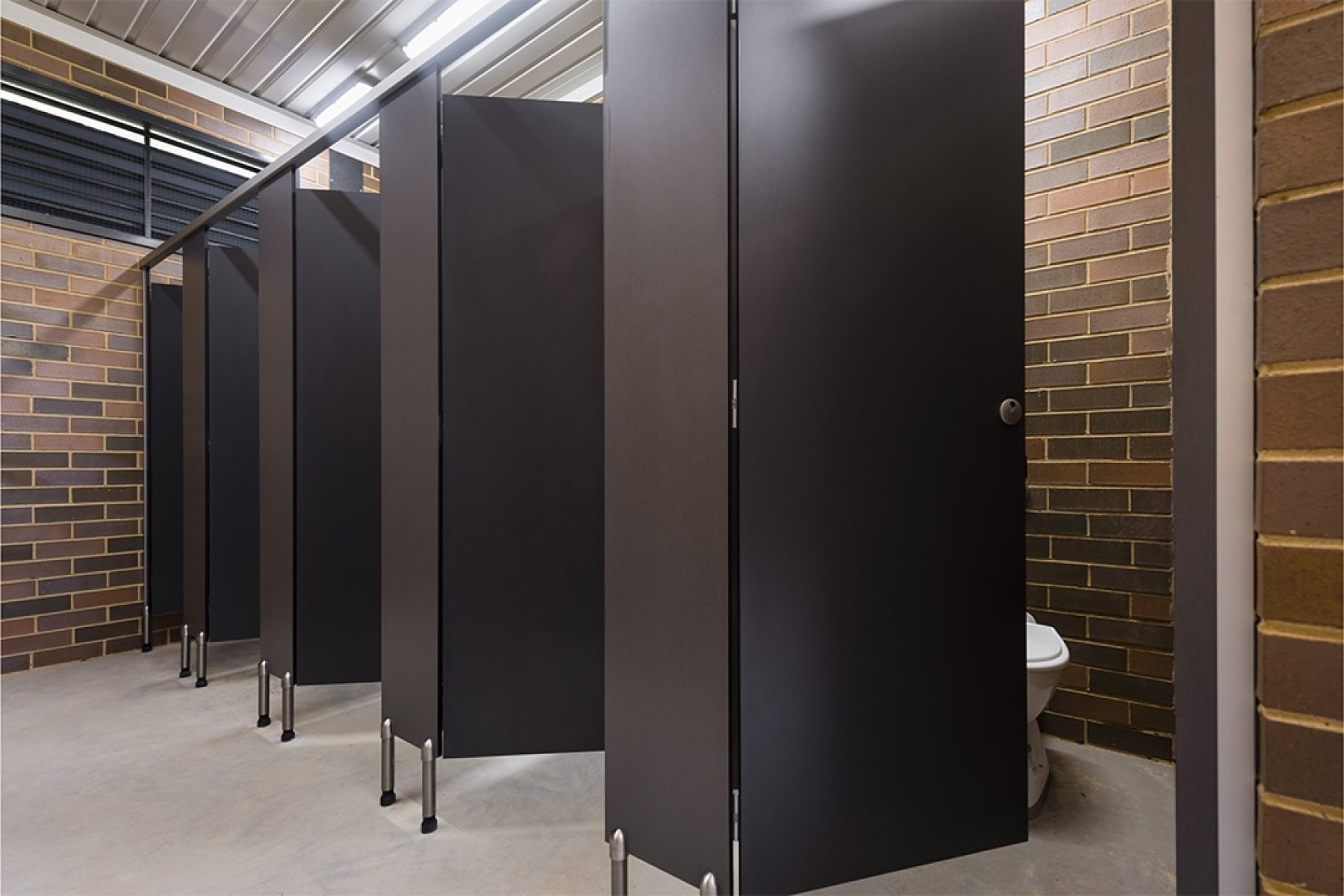
Navigating the hurdles of true stewardship
Naturally, implementing a genuine circular economy model isn’t easy, and DuraCube’s transparency about the challenges involved underscores the authenticity of their commitment. And, as Ben points out, while setting up a simple local recycling programme might have been an easier path, the most impactful solution required a global vision.
“The materials are exported to developing nations for use in alternative applications, so organising reliable export processes was paramount,” Ben says. “And to make this work, we needed to team up with international initiative partners who shared our ethos and were keen to reuse the materials in this way.”
Overcoming these logistical and partnership hurdles demonstrates a level of dedication that goes far beyond surface-level sustainability, highlighting DuraCube’s commitment to finding the best possible outcome for the materials.

The backward design evolution
For DuraCube, this program is by no means a final destination – it’s a step in the process of continuous improvement, including the realm of sustainable certifications. Their bathroom joinery systems are not just supported by a Product Health Declaration (PHD) and an Environmental Product Declaration (EPD) – the company has also recently expanded its Green Rate Level A certification from covering solely the compact laminate range to including the systems in their entirety when installed – a significant advantage for specifiers targeting environmental ratings.
“The product stewardship program was a key contributor in achieving the Green Rate Level A certification,” Ben explains. “And it means that projects targeting Green Star can now claim the entire value of their bathroom joinery systems by DuraCube, provided they have been built with DuraSafe Compact Laminate.”
Ben adds that DuraCube is also targeting the FSC certification as the next initiative to provide evidence of sustainable manufacturing practices and material sourcing. For specifiers, Forest Stewardship Council (FSC) certification is a globally recognised gold standard, verifying that wood-based products are sourced from responsibly managed forests that protect biodiversity, Indigenous rights and ecological integrity
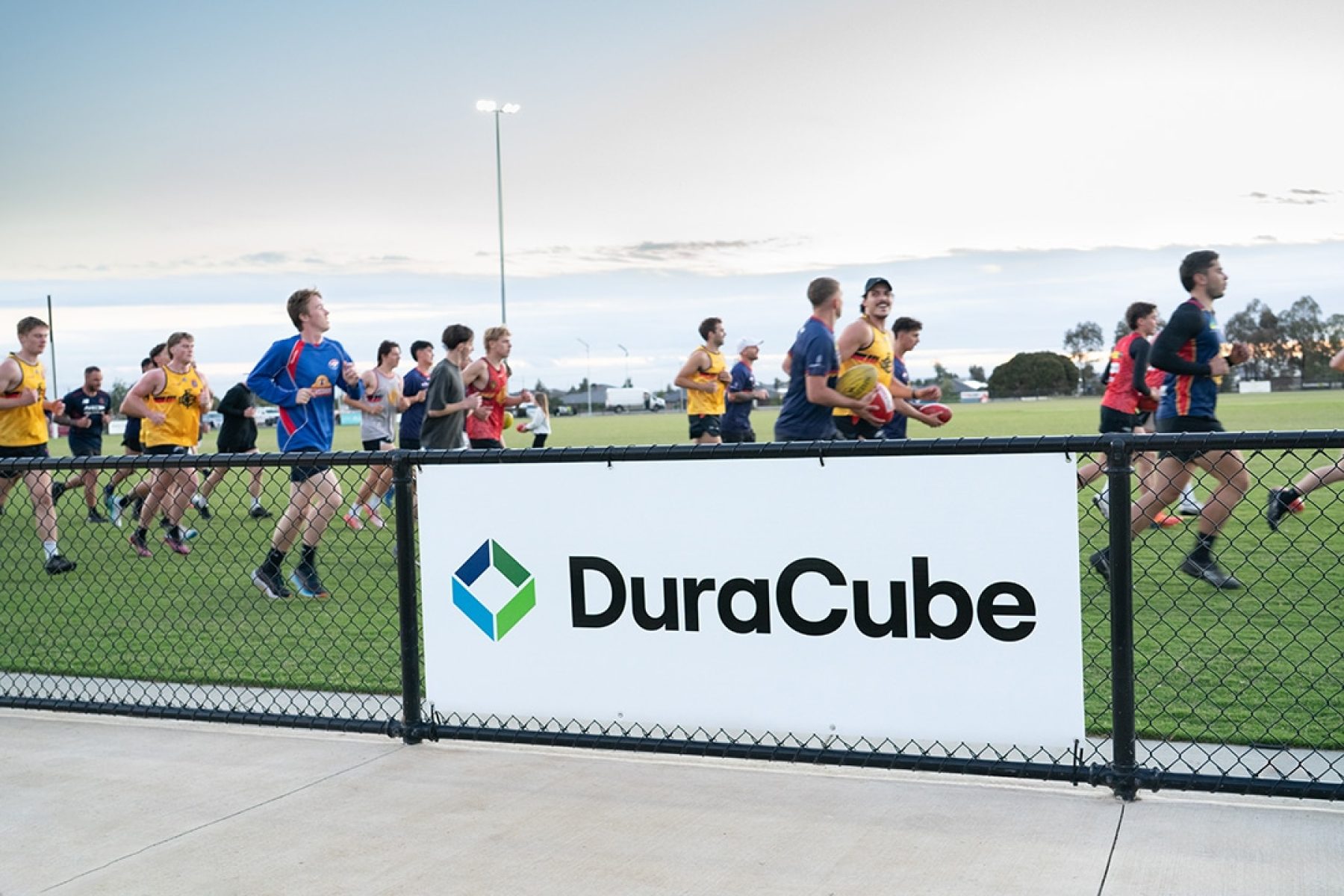
Shifting the collective mindset
Ben admits that while the program is a powerful statement, its ultimate impact relies on an industry-wide shared vision, aptly reflected by the initiative’s collaboration with global like-minded partners. And while designers play a critical role, it’s the manufacturers who have to pave the way.
“We recognise that sustainability is a shared responsibility across all stakeholders in the design and construction process,” Ben states. “However, meaningful progress is only achievable when manufacturers take the lead in providing clear and transparent access to sustainable options — along with the necessary information on their environmental impacts and implementation processes.”
That’s precisely what DuraCube is modelling with its data-backed Product Stewardship Program. It presents an opportunity to specify a certified, fully-documented solution that makes achieving project goals like Green Star ratings easier, knowing it’s a direct contribution to the circular economy – without adding complexity or a cost premium to the project. And, ultimately, this model reinforces the idea that future-forward thinking is about considering products back to front – and that the most responsible designs are those that have already planned for their end.
Note:
This article was originally published on Architecture & Design on 17 July 2025
